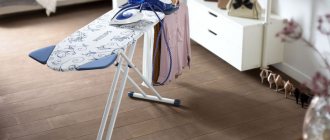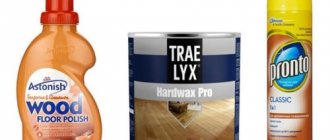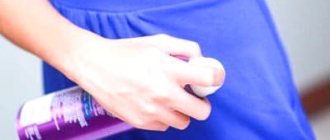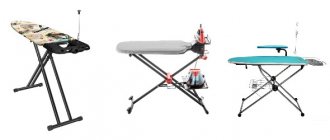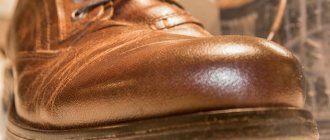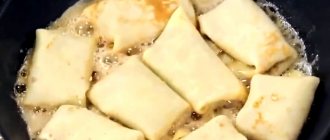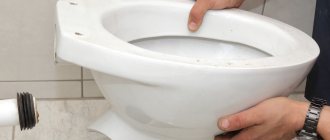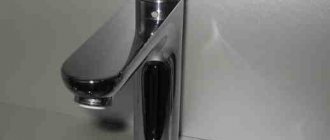In the vast majority of cases, parquet boards are laid using the floating method, using special groove joints. This type of flooring installation is most suitable for small rooms and is convenient to use in small areas. In rooms with large areas, the method of laying parquet using glue is more suitable, which will allow the parquet board to be especially securely fixed to the main surface. Thus, it is for laying parquet boards that you need to properly prepare the base and select the adhesive composition.
Requirements for technical parameters of parquet adhesive
During the operation of a parquet board, it suffers from various negative influences - from mechanical to chemical-physical. These include a sharp change in ambient temperature, a decrease/increase in humidity, as well as load intensity - all this can lead to deformation of the flooring material. To reduce the negative impact on the board, the correct adhesive formulation should be used. It must meet the following requirements:
- The minimum required amount of water should be used as a solvent in the composition - this is due to the fact that moisture has a destructive effect on wood and can cause it to deform/swell, as well as warp the top layer of finish. After drying, the material should restore its original dimensions, however, its surface will need some restoration. Sometimes the scale of the resulting deformation can reach such proportions that the coating will require serious repairs or even its complete replacement. Thus, the less moisture is present in the adhesive composition, the more effectively the board will adhere to the base surface, and the board itself will not undergo excessive deformation.
- After laying the dies, their shrinkage should be minimal - if the thickness of the adhesive layer decreases after drying, the plane of the outer coating may be disrupted. From here, gaps may appear between individual decorative elements, which will later become a source of unwanted squeaks.
- The elasticity of the adhesive - this requirement must be taken into account, because when interacting with water or when sudden temperature changes occur, parquet panels can change their original dimensions towards reduction or increase. These circumstances, in turn, can affect the size of the seams between adjacent dies. Thus, the adhesive layer must be able to stretch/compress, ensuring the mobility of the parquet elements. If this requirement is not met, the coating may begin to deform when humidity or temperature conditions change again. Silicone compounds produced in Western Europe have excellent elasticity characteristics. They fit perfectly on the base surface, don’t stick to your hands too much, and can dry quickly.
- The service life of the adhesive should be as close as possible to the service life of the parquet board itself - this criterion must also be met, because otherwise the dies mounted on the screed may begin to peel off ahead of schedule. In such a situation, a full restoration of the entire coating will invariably be required; there will be a need for precise selection of dies that require replacement, according to the pattern and color equivalent to the original ones. And this task can cause certain complications;
- The chemical composition of the glue must comply with certain sanitary requirements - this means that it should not contain substances harmful to humans.
IMPORTANT! A good adhesive composition can easily adhere to any base, regardless of its type, have excellent elastic properties and dry quickly. Moreover, it should be easily removed from the surface being treated, without leaving marks or stains.
Two-component adhesive composition
This is the most durable parquet adhesive currently known. The two-component composition is based on polyurethane, which provides excellent adhesion to concrete and wooden substrates. Before use, a hardener must be added to the polyurethane mixture, which is why the glue is called two-component.
The glue contains no water or solvents. The hardener reduces the curing period of the adhesive by half compared to solvent-based adhesives. The time for complete hardening is approximately a day.
Polyurethane glue is very durable, universal - it can be used on any substrate: wood, plywood, concrete. It is used for laying any parquet material, including exotic types (merbau, bamboo), of any size. It can be used to lay even expensive artistic parquet.
Uzin brand two-component polyurethane parquet adhesive is an excellent solution for installing solid wood boards.
Advantages of glue:
- drying time from 24 to 30 hours;
- high elasticity, resistance to deformation;
- resistance to temperature fluctuations;
- moisture resistance, good adhesion.
The polyurethane composition is not afraid of high temperatures, making it quite suitable for combination with a floor heating system.
Flaws:
- the main disadvantage of two-component parquet adhesive is its high cost, which is fully justified by its excellent qualities and durability of use;
- Another drawback: 2-component parquet adhesive cannot be applied to floors with a humidity of more than 4%.
Be aware: before the end of hardening, the two-component composition releases harmful substances. For this reason, they work with polyurethane mixtures in respirators. Once cured, the glue is not hazardous to human health.
Questions about proper glue consumption
The consumption of the adhesive substance for installing parquet directly depends on its density, and additionally on the type of base on which it will be applied (i.e., the dies can be glued to a pre-flat concrete floor or to straightened plywood). The consumption for different types of parquet will be different, but the fundamental principle is the same - the smaller the parquet board, the less glue is required. Some types of adhesive substance can only be applied after preliminary priming. This way it is better possible to fill all the gaps/cracks, which will quantitatively reduce the consumption of the solution.
It is on parquet boards that it is not recommended to use compositions based on various solvents. Such samples are capable of penetrating deeply into the basic structure of the material, and the moisture thus accumulated inside the parquet can, over time, cause the formation of mold or mildew, or even deform the wood altogether. If you nevertheless decide to use a composition using a solvent, then the best option for installing a parquet board would be to mount it on moisture-resistant plywood, or, as an option, on a well-prepared and pore-free concrete base.
Consumption can also be reduced if the underlying base is as level as possible. In principle, you can use self-leveling mixtures or process the base base using an angle grinder. Consumption will be reduced due to the uniform distribution of the glue substance over the most even surface. As an example, we can give the following figures: for one square meter of a very smooth surface, approximately 800 grams of glue are spent, while for a surface with roughness you will have to spend about 1.2 kilograms for the same area.
How to use it correctly
Before laying parquet, you need to check the temperature and humidity of the concrete screed, especially in the corners. Complete hardening of the concrete occurs after a couple of weeks. The glue is prepared according to the instructions, and then installation begins:
- Apply a primer to the concrete and wait until it dries completely.
- It is possible to pre-lay out the parquet the way it will be glued.
- Using a ridge spatula, apply glue slightly larger than the size of the board to the base.
- Lay the parquet and lightly press it down. Excess glue is immediately removed.
If the boards are small, it is possible to lay several pieces at once.
Existing types of parquet glue
Dispersive
This substance is prepared on the basis of natural ingredients - water and adhesives, as well as with the addition of plasticizers. This composition can be used for installing a floor base in various residential premises. During its drying, no harmful fumes are released into the environment. Due to the presence of natural substances in its structure, this composition does not have a pungent odor.
In retail sales on the domestic market, a similar sample can be represented by many brands, which may differ from each other in the ratio of the base substance to the volume of water required as a solvent. The less water required, the higher the cost of the material becomes. At the same time, it is worth remembering that compositions that require a significant amount of water for the solution will harden much longer. Experts recommend using dispersion mixtures for installing parquet planks on a base made of sheets of moisture-resistant plywood.
IMPORTANT! Most manufacturers of dispersion mixtures position their product as the best for laying parquet boards made of hard wood, for example, ash or oak. Due to its increased density, this material is able to successfully resist the water component located in the adhesive structure; accordingly, it will be slightly susceptible to deformation. At the same time, manufacturers note that it is better to process small dies with dispersion mixtures.
It is strictly not recommended to use dispersion substances on parquet made from soft fruit wood (cherry, apple or pear). Their soft structure is especially susceptible to the penetration and accumulation of moisture, which in turn will invariably (over time) lead to deformation of the board. This especially applies to thin parquet boards, which are glued using a dispersion mixture containing more than 36% aqueous solvent. Additionally, it is worth noting that dispersion adhesive is absolutely not suitable for beech or alder-based parquet.
Substances in other solvents
Such mixtures can be used to attach parquet planks made of any type of wood. Instead of water, various synthetic substances play the role of solvent in them. This shortens the drying time of the substance and improves adhesion to the base surface. It is worth noting that such a solution can remain in a liquid state for no more than 15 minutes, after which the process of solidification begins. This time is quite enough to adjust the already laid parquet board in terms of correcting the location of the dies. Complete hardening of the substance occurs within 120 hours.
The most popular type of the described composition is rubber-based adhesive. It has high adhesion, excellent astringent properties and dries quite quickly. However, its components are highly flammable, therefore, until complete drying, work with open fire sources (welding, gas cutting) is prohibited near the elements treated with it.
Substances of two components
Two-component solutions have improved strength properties and durability. Unlike their one-component counterparts, special hardeners are added to their composition immediately before installation work. However, their structure also contains water, but it quickly evaporates after drying and does not have time to harm the parquet board. Drying completely occurs within 24 hours.
There are solutions belonging to this group that dry in just 12 hours. However, the price of such rapid drying has its downside - the adhesion of the mixture will be three times stronger, so removing parquet installed on such samples is extremely difficult. It is advisable to use such powerful mixtures on surfaces that require strong adhesion, for example, regular wooden flooring.
Reactive compounds can be used to install dies from any type of wood and their size will not matter. They can also carry out high-quality installation of solid boards in rooms where high intensity traffic loads are expected. However, even reactive samples will require treatment with protective layers of varnish in order to increase their strength properties.
The main disadvantage of a two-component adhesive is its inflated cost, however, the investment will pay off in full due to the increased service life, reliability and durability of the installed coating. At the same time, it must be remembered that the mixtures considered will release harmful chemicals into the surrounding space before the end of the complete hardening time. Therefore, when working with them, it is imperative to use personal protective equipment and carry out work in a respirator and gloves. But after drying, the solutions cease to pose a threat to human health.
Laying solid boards with glue - a step-by-step process
- Before you begin, you need to unpack the solid board and leave it in the room for at least three days. This will allow the material to adapt to the climate of the room in which it will “work”, namely temperature and humidity.
- Then you can begin preparing the base. To do this, the floors are leveled using a cement-sand screed. It will take about a week for it to gain strength.
- The next stage is laying sheets of plywood or chipboard on the floor. The material must be dense and moisture resistant. The optimal plywood thickness is at least 15 mm, sheet size is 600-1000 mm. The sheets are secured to the floor using self-tapping screws. Additional fixation will be provided by coating the base with glue, and the joints of the sheets with elastic sealant.
- Laying the flooring starts from the wall. The markings are made on plywood with a distance of 5-10 mm from the wall. For convenience, you can drive in wedges. It is recommended to lay out two rows of boards without glue, label the elements so as not to confuse the order of installation, and disassemble them.
- Polyurethane glue for solid boards is applied with a spatula, then the boards are laid, joining into a lock. First, lay out the first row, then the second, carefully fitting each other. Additionally, the boards can be nailed with small nails. Experts do not recommend applying glue to the back side of the boards, as the material may not adhere properly due to the voids that form.
- Then you can lay the remaining rows. After this, it is necessary to wait several days for the coating to completely adhere.
- If the floor covering does not have a protective layer, it is necessary to apply oil or varnish. This is done by grinding, then polishing and collecting dust, after which a protective coating is applied.
- The final stage is the installation of skirting boards.
Laying solid boards with glue
Is it worth laying solid wood without glue?
Laying is possible without glue; this method is called “floating”, that is, the boards are not fixed to the base, but are fastened only to each other.
Wood constantly contracts and expands as a result of changes in temperature and humidity, and installation without adhesive does not impede the movement of the floor as it becomes a single unit. That is why this installation method has an important advantage - there will never be any gaps in the floor between the boards.
Helpful Tips:
- Installation without glue is possible on any base, be it plywood, concrete or tile.
- This technique is suitable for creating warm floors.
- You can choose any solid board as the material for the flooring.
- This option is not recommended in rooms with heavy furniture, which, when rearranged, can tear out or damage the lock.
Using parquet adhesive for various types of coatings
Depending on the type of parquet being laid, experts recommend using your own type of glue for each specific case. Such variability will ensure reliable adhesion and long service life:
- Industrial parquet – this type of coating has an industrial purpose and is specially designed for rooms with heavy traffic and high loads. This material is considered quite new, its use has not yet reached large scales, so practical recommendations are not very widespread. However, a two-component polyurethane-based composition is best suited for it.
- Solid boards more than 12 cm wide - the mixture used for this coating must have maximum strength and elasticity. In many ways, these requirements are met by the qualities of polyurethane adhesives. Moreover, polyurethane mixtures can be used directly on the screed, avoiding the use of a substrate.
- Installing the board on a screed (except for options with a width of more than 12 cm) - here you can use two options: the first is to glue everything together with a two-component polyurethane base and attach it directly to the screed, which will qualitatively reduce the consumption of adhesive material. The second is to use the Multimol substrate, but then the consumption will double, but the process technology itself will be simplified.
- Installing the board on a weak screed (except for options with a width of more than 12 cm) - again, you will need a mixture with excellent adhesion properties, since the application will be made on a weak base. The optimal solution would be one-component variations. In addition, their increased elastic properties will reduce the risk of temporary deformation of the seams.
- Attaching a solid board with a width of more than 12 cm to plywood sheets - in this situation, it is necessary to ensure resistance to vertical tearing, which a one-component adhesive can handle perfectly.
- Laying boards on plywood - such a wide-format material does not interact well with moisture, which means it is impossible to use dispersion options. Experts advise using durable and elastic one-component samples.
- Installation of piece parquet elements made of fruit wood on plywood sheets is an extremely unstable version of parquet, therefore, the use of dispersion compositions is prohibited.
- Installation of a coating with a varnish bottom layer - such parquet structures are characterized by a high probability of delamination of their lower part, which can be caused by intense loads. However, professionals call standard one-component adhesive the best option for this situation.
Installation method without plywood: features
Block parquet and boards can be attached directly to concrete. This way, significant savings in money, time, and effort are achieved. Typically, plywood was used earlier, when there were no strong adhesives; floors were made on wooden joists and floors with bitumen backfill and hardboard on top.
Block parquet can be easily laid on concrete without gaps or cracks. After finishing, the floor is reliable and smooth. The boards are attached to the concrete base with glue, then the parquet is sanded with a special machine or manually, the cracks are sealed with sealant, and sanded again. The finished surface is primed, coated with oil or varnish.
Varnish coating is considered a higher priority, as it protects the floor surface from mechanical damage and moisture, making it durable and aesthetically pleasing.
A solid board is not always ideal in terms of parameters and geometry, so if you install it without plywood, you need to fix it with nails and tighten it.
Difficulty of choice
As practice shows, the average buyer is unlikely to be able to independently and without proper experience correctly select one or another adhesive for a specific type of parquet. The adhesive composition must meet a number of criteria, on which the strength, reliability and durability of the laid parquet board will depend. These criteria may include:
- Working convenience - the mixture should be conveniently applied with a spatula, not contain extremely harmful and super-toxic elements, and not harden too quickly for the purpose of possible adjustment of the position of the board (except for two-component samples, the structure of which contains a hardener).
- Structural uniformity - upon completion of application, the resulting layer should not contain air bubbles, which could negatively affect the quality of the gluing. The adhesive reef should hold its shape and not spread, thus preventing possible shrinkage, subsidence and stress in certain areas of the floor covering. All this directly affects the initial strength and is important for the initial stage of adhesion.
- The “life” period of the glue is an extremely important criterion, because some types of glue can lose their performance characteristics after just a year. When using cheap samples, it is possible for the seams to diverge or even for the parquet to lag behind the base. Unnecessary squeaks may also occur.
- Environmental properties - the selected composition must have an appropriate certificate recognized by the Russian state. This will ensure that such glue is harmless to humans after it has completely dried (some release of toxic substances is still allowed during the process of working with individual samples).
- Strength characteristics are another important criterion. Installed parquet or parquet boards are still a wooden material capable of accumulating moisture, as a result of which it is susceptible to expansion and deformation. Only high-quality glue can prevent moisture from penetrating into the wood structure, which will significantly increase its strength properties.
Rubber adhesive mixture
Rubber parquet adhesive is one of the most elastic of parquet adhesives. It is suitable for gluing:
- traffic jams;
- laminate;
- parquet;
- plywood;
- massive board.
Excellent for finishing floors made of wood types that are not resistant to moisture: ash, hornbeam, walnut, birch. Advantages of glue:
- high wear resistance;
- does not change the shade of the parquet surface;
- moisture resistance.
Before gluing parquet or plywood using a rubber compound, you need to consider:
- The adhesive can be applied to the surface of the base with a humidity of no more than 4%;
- When the glue dries, the air humidity readings should be less than 65%, the temperature should be above 19º (about a day).
Instead of an epilogue
An analysis of the market for adhesives in the Russian Federation for parquet boards showed an almost complete absence of Russian manufacturers in this segment. Such circumstances are associated with the lack of appropriate technologies in domestic firms, and even their presence will not be able to bring down the competitive prices of Western companies. Still, it is worth recognizing that our buyer is provided with good and high-quality glue options at a very reasonable price. Moreover, most samples are universal and can work not only with wood. It is also worth noting that the mixtures have additional functionality, for example, frost resistance, and most products from the middle and premium segments regularly use innovative technologies (meaning enhanced MS polymers for one-component samples). This suggests a legitimate conclusion - although this market in the Russian Federation is not replete with an abundance of options, for the most part it is able to satisfy any request of a potential buyer both in terms of the functionality of the product and its price.
Popular manufacturers
Wood is considered a rather capricious material, which must be selected and laid in compliance with all the nuances. When purchasing adhesive for parquet boards, it is very important to pay attention not only to its characteristics, but also to the manufacturer. It is recommended to choose only products from trusted manufacturers who, during their existence, have proven themselves exclusively on the positive side.
The following companies are considered the best manufacturers of parquet board adhesives:
- Franklin International is an American company specializing in the production of assembly and carpentry adhesives. The manufacturer's products have been present in the markets of 70 countries for more than 70 years. It is distinguished by high quality and affordable price.
- WAKOL is a German company that produces adhesives and primers for laying floor coverings. The products are in great demand and are of high quality.
- KIILTO is a Finnish family company that is a major manufacturer of industrial adhesives and construction and finishing materials. The company takes a responsible approach to safety and environmental protection - about 80% of its products are classified as environmentally friendly and safe, which is confirmed by certificates.
- Akfix is a company that produces high-quality construction chemicals that meet all modern requirements. Developed in laboratories using experience and technological solutions. The entire range of products is produced at a facility equipped according to the most modern European standards.
- TYTAN PROFESSIONAL is a Russian brand that is part of the Selena group of companies. The products are in great demand and are of good quality and reasonable price.
- Bostik is a French company engaged in the production of high-quality construction and industrial adhesives for household needs. Only the best components and innovative technologies are used in production.
- SikaBond is a Swiss manufacturer of construction chemicals. The glue produced under this brand is of high quality and reasonable price.
All of the companies listed above have proven themselves to be positive during their existence. The products of these brands are recommended by experts and advised by ordinary buyers.
